Nonfiction for Kids You Don’t Know Very Well
Editor/author/pundit, Marc Aronson spoke to NYC school librarians in November and repeatedly expressed his dislike for the phrase “non-fiction.”
“It is as if books about real things are less than made-up stories,” he exclaimed incredulously. He passionately advocated the renaming of the category “reality” books as in reality TV.
I wouldn’t go that far. At my library the signage says “non-fiction,” but the phrase we use more often is “information books,” so the kids who only want books about “real things” can find them. If you’re asked to recommend gift books for kids who aren’t interested in fiction, here’s my list of the year’s best.
Picture Book Biographies
This year brought three exemplary, highly illustrated memoirs by award-winning picture book illustrators.
All the Way to America: The Story of A Big Italian Family and A Little Shovel by Dan Yaccarino, RH/Knopf, $16.99 Ages 5 and up
As a nation of immigrants, we have many family stories of “coming to America.” This is Yaccarino’s, beginning with his great-grandfather, who grew up on a farm in Sorrento, Italy. As a child, he was given a little shovel to help tend the zucchini, tomatoes and strawberries that the family sold in the village. That shovel, handed down through the generations, tells the the story of Michele coming to New York City and the family that grew in the new land.
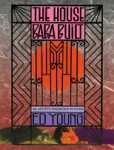 The House Baba Built: an Artist’s Childhood in China by Ed Young, Little Brown, $17.99, Ages 9 and up
The House Baba Built: an Artist’s Childhood in China by Ed Young, Little Brown, $17.99, Ages 9 and up
Using mixed media — watercolor, pen and ink, crayon — the artist has created a collage of memories, depicting the China of his youth just before and during WWII. His family portraits, interspersed with archival magazine photos and illustrations evoke a lost time as he describes the home his father made in Shanghai to keep the children safe in troubled times.
Drawing From Memory by Allen Say, Scholastic Press, $17.99 ages 10 and up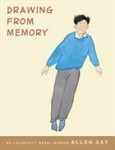
Born and raised in Japan at the tail end of WW II, this Caldecott-winning artist left home at age twelve to live alone and attend an elite school. This memoir describes those years with his best friend Tokido, apprenticed to Noro Shinpei, a renowned cartoonist who they called Sensei.
Books about Animals
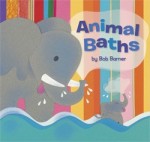 Animal Baths by Bob Barner, Chronicle, $15.99, Ages 2 and up
Animal Baths by Bob Barner, Chronicle, $15.99, Ages 2 and up
Did you know eels’ pointy teeth are cleaned by tiny shrimp? That bears scratch against tall trees to rub off mud and ticks? This cheerful collection about how animals keep clean is illustrated with cut paper collage with pastels.
[A dozen more titles, after the jump; click below]
Time to Eat and Time To Sleep by Robin Page and Steve Jenkins, Houghton Mifflin Harcourt, $12.99, Ages 3 and up
This husband-andwife team presents a variety of fascinating animals in two fact-filled volumes. Among the creatures illustrated in Jenkins detailed collage illustrations are the giant panda, a tick, a shrew, an acorn woodpecker, a chipmunk, a butcherbird, a black widow spider, the crucifix toad, and an anaconda. The small format is perfect for curious preschoolers.
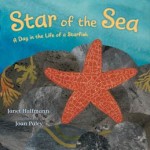 Star of the Sea: A Day in the life of a Starfish by Janet Halfmann, illustrated by Joan Paley, $16.99, Macmillan/Holt, Ages 4 and up
Star of the Sea: A Day in the life of a Starfish by Janet Halfmann, illustrated by Joan Paley, $16.99, Macmillan/Holt, Ages 4 and up
Children who have been following the etymology of this sea creature will object, “Hey, the title is wrong! It isn’t a starfish! It’s called a sea star!” The author addresses the issue immediately as we follow Sea Star on her hunt for a tasty snack. Indeed, it isn’t a fish at all but a sea animal with spiny skins called echinoderms, in the same family as sea urchins, sand dollarsand sea cucumbers.
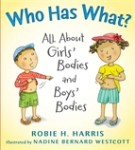
Who has What? All about Girls’ Bodies and Boys’ Bodies by Robie Harris, illus. by Nadine Westcott, $15.99, Candlewick, Ages 2 and up.
The kids at our school would be the first to tell you that humans are animals, mammals to be specific. Here is Robie Harris (It’s Perfectly Normal, It’s Not the Stork), explaining the parts of the body that children are curious about in the most matter-of-fact way. This may not be an obvious choice for gift-giving, but there are parents out there who would be grateful for a little help explaining the similarities and differences to their little ones.
Slinky, Scaly, Snakes by Angela Royston and Bugs! Bugs! Bugs by Jennifer Dussling, $3.99, Penguin/DK Readers, Ages 5 and up
These easy-to-read volumes about insects and reptiles are winners for their high interest topics and limited language. Many children want information books with photographs and these full-color close-ups deliver.
Nic Bishop, Butterflies, by Nic Bishop Scholastic, $3.99, Ages 5 and up
Award-winning naturalist photographer gives a close-up look at butterflies. The simple language of this easy reader matches perfectly with the stunning full-color photographs.
Put together your own gift set of information books with others in the Scholastic Readers series, Skeletons by Lily Wood, Animal Disguises by Emma Ryan, and Hibernation by Tori Kosara.
Illustrated Information Books
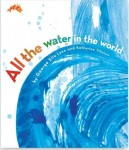 All the Water in the World by George Ella Lyon, illustrated by Katherine Tillotson, S&S/Atheneum,$15.99. Ages 5 and up.
All the Water in the World by George Ella Lyon, illustrated by Katherine Tillotson, S&S/Atheneum,$15.99. Ages 5 and up.
Where does water come from? Lyon’s lyrical poetry dances across the page as the water flows from a hose, runs down river, evaporates into the sky, splashes across the page and rains down on bright umbrellas in the sharp, graphic digitally rendered images.
Meadowlands: A Wetland Survival Story by Thomas F. Yezerski, $17.99, FSG Ages 8 and up.
This is the natural history of the 20,000 acres of land that comprise the wetlands of New Jersey, a mix of freshwater and salt water that soaks onto spongy ground and houses flora like scrub oak, pennywart and cattails as well as fish like shad, black sea bass and the Atlantic sturgeon. As the land returns from industrialization, snakes, red fox and turtles can found. Migrating birds that haven’t been seen since the 1940’s are also returning.
History
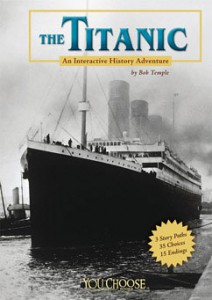 The Titanic: An interactive History Adventure, by Bob Temple, Capstone Press, $6.95 Ages 8 and up
The Titanic: An interactive History Adventure, by Bob Temple, Capstone Press, $6.95 Ages 8 and up
Some of you may take issue with my inclusion of these You Choose fictionalizations of historic events in a non-fiction round-up, but I have had a surge of requests for information books about historic events recently and it can be really hard to find the “just right” non-fiction independent reading books for 3rd and 4th graders. The “you are there” quality of the “choose your own adventure” storytelling is engaging and, having fact-checked one of the titles in the series, I am confident in the quality of the information.
Biography
 The Life and Disappearance of Amelia Earhart by Candace Fleming, RH/Schwartz & Wade, $18.99,Ages 10 and up
The Life and Disappearance of Amelia Earhart by Candace Fleming, RH/Schwartz & Wade, $18.99,Ages 10 and up
Marc Aronson exhorts librarians to see that non-fiction offered more not less than fiction: a dramatic story, enticing language, factual accuracy and context with the greater world. Fleming’s profile of aviation pioneer Earhart offers that and more. Packed with archival photos, crisp narration, Fleming has created an ultimately heartbreaking, gripping, page-turning adventure.
Outside-the-Box
 Hugo Movie Companion by Brian Selznick, Scholastic Press, $19.99 Ages 8 and up.
Hugo Movie Companion by Brian Selznick, Scholastic Press, $19.99 Ages 8 and up.
Turns out there’s a first for everything. I would have bet $100 that I would never recommend a movie tie-in. If I had, I would now have to pay up. Hugo, the movie based on Brian Selznick’s Caldecott-winning The Invention of Hugo Cabret, is the amazing 3-D film directed by Martin Scorsese. Here, Selznick’s examination of the movie-making processes is richly illustrated with color stills from the movie, behind-the-scenes action and his own illustrations. For anyone who has wondered how directors, cinematographers, screenwriters, and actors do their work.

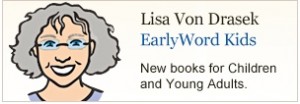
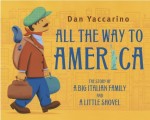
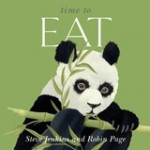
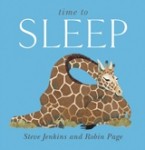

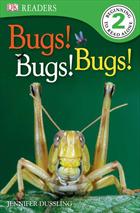
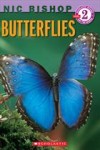
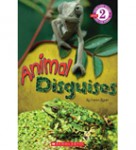
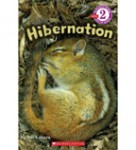
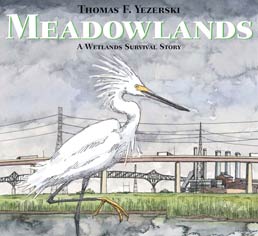
December 14th, 2011 at 6:43 pm
To me, the term “information book” implies there is no story, just facts, however informative.
I vote with “reality books”! Or maybe, in the case of a book like Candace Fleming’s wonderful “Amelia Lost,” “reality story” . . . A true story, that really happened.
Mary Losure
author, “The Fairy Ring, or Elsie and Frances Fool the World” (non-fiction, Candlewick, March 2012.)
http://www.marylosure.com/December 15th, 2011 at 10:31 am
Actually, I don’t have a problem with the word “nonfiction.” Penny Colman is a real advocate for that word. It means that nothing is made up. When you tell a story powerfully to children the first question is often, “Is it true?” There is added value if you can say, “Yes!”
December 19th, 2011 at 8:00 pm
I have bookmarked this post! So comprehensive and such a helpful list of materials! It’s great to have them all come together here – and to think that all these lovely titles have only been published in 2011! I’ve heard so much about Allen Say’s Drawing from Memory and Ed Young’s memoir – I should get my hands on those soon.